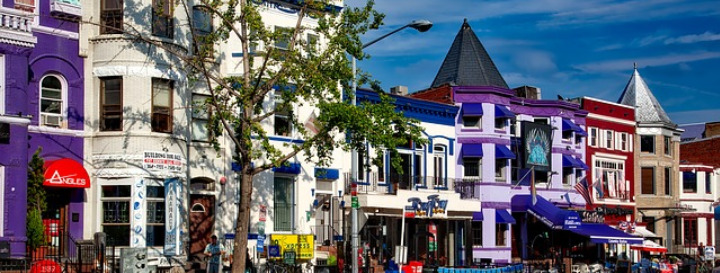For a big-city family vacation, Washington, DC, is perfect. It has all the art, culture, and fun of a large metropolitan area without the overwhelming architecture or overly frenetic pace. Sure, some kids might think that traveling to the nation’s capital sounds more like a school field trip than an exciting getaway, but parents shouldn’t be deterred. Once the gang discovers there is more to the city than the stuff they read in textbooks—and that most of that stuff is actually pretty cool—the whole family will be in for a fun and educational holiday (with the educational part masquerading under the guise of fun).
Lay of the Land/Getting Around
The layout of the city itself proves to be one of Washington’s most family-friendly aspects. Many of the best attractions are concentrated in or around the National Mall, an area that’s easily accessible by foot or public transportation. And, for a big city, DC rates high on aesthetics. Towering buildings don’t dominate the skyline and green is a common color around town—tree-lined streets, grassy squares and circles, the Mall itself, and the sprawling foliage of Rock Creek Park bring a welcome sense of nature to an otherwise concrete jungle—hence DC’s nick-name The City of Trees.
On first introduction, the streets themselves may seem like snarl of letters, numbers, traffic circles, and diagonal roads all randomly traversing the city. But once you understand how it all comes together, getting around becomes an easy, even fun, venture.
The city itself is divided into four cardinal quadrants—Northeast, Southeast, Northwest, and Southwest—with the Capitol Building sitting at the core. The roads are laid out in a grid, with numbered streets running north to south, and lettered streets east to west, ascending in order as you travel away from the Capitol. Broad avenues named after U.S. states extend diagonally across town, Pennsylvania Avenue being the most famous of all. There is (of course) an exception to this system: Two main arteries Constitution and Independence Avenues—take the place of B Street, running parallel to the other lettered streets. Because of this composition, the same street numbers and letters are distinguished by the quadrant (as in E Street, NW and E Street, SW), so pay attention to the quadrant designations on the street signs.
The bulk of must-see family attractions are on the Mall and in the Northwest quadrant (NW), but there are sights worth checking out all around the city. And just about everything you want to see can be reached by the DC subway system, known as the Metro. Often called one of the best public transportation systems in the country, the Metro is clean, convenient, and (mostly) reliable. And for a lot of kids, taking the steep escalators into the city’s depths, then shuttling across town on an underground train is like Washington’s own version of Hogwarts Express.
Five color-coded Metro lines serve the entire Washington metro area. Armed with a map, you can get almost anywhere (download a DC Metro map in advance of your trip). A single-ride runs $1.35 to $4.50, depending on the time of day and how far you go (unlike some cities, DC Metro determines the cost based on the distance traveled and whether or not you’re traveling during rush hour—rate info is posted at each station). Fare cards can be purchased at vending machines in the Metro stations (each person has to have their own fare card—you cannot share fare cards). Children four and under ride free with paying adults. A note to parents with babes in strollers: Look out for elevators at Metro stops, especially if you are switching lines, as they’re not always conveniently located. And if you’re riding during a busy time, you may want to consider folding up the stroller and walking with or carrying your child on the escalator, to avoid the possibility of long elevator lines—just be sure to stand to the right, as the left side is dedicated to people who walk on the escalators.
Though DC has an extensive network of busses, most routes are more convenient for locals rather than tourists, save for the DC Circulator. This relatively new bus line connects neighborhoods that are otherwise difficult to access via public transportation, with lines that run from the Mall to Chinatown, Union Station to Georgetown, and the Waterfront to the Convention Center.
Unless you’re planning day trips 30 miles outside of the city, don’t bother with a car. Parking can be costly—most hotels charge at least $25 per day, in-city lots run around $20, and feeding meters every two hours is not exactly convenient. If you do require a rental or have driven into town, be sure to carefully read the street signs before leaving your car on city streets. Parking is prohibited at certain times, and officials don’t hesitate to hand out tickets or tow. Also, consider parking at a Metro stop in Virginia or Maryland to save on parking fees, and then shuttle in via the Metro.
Next Page: Washington, DC Activities & Attractions
